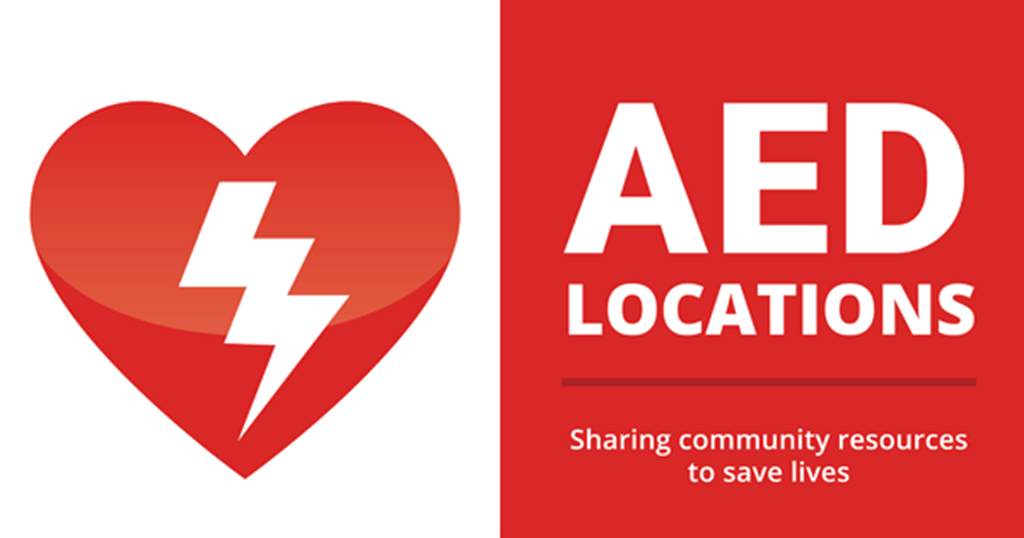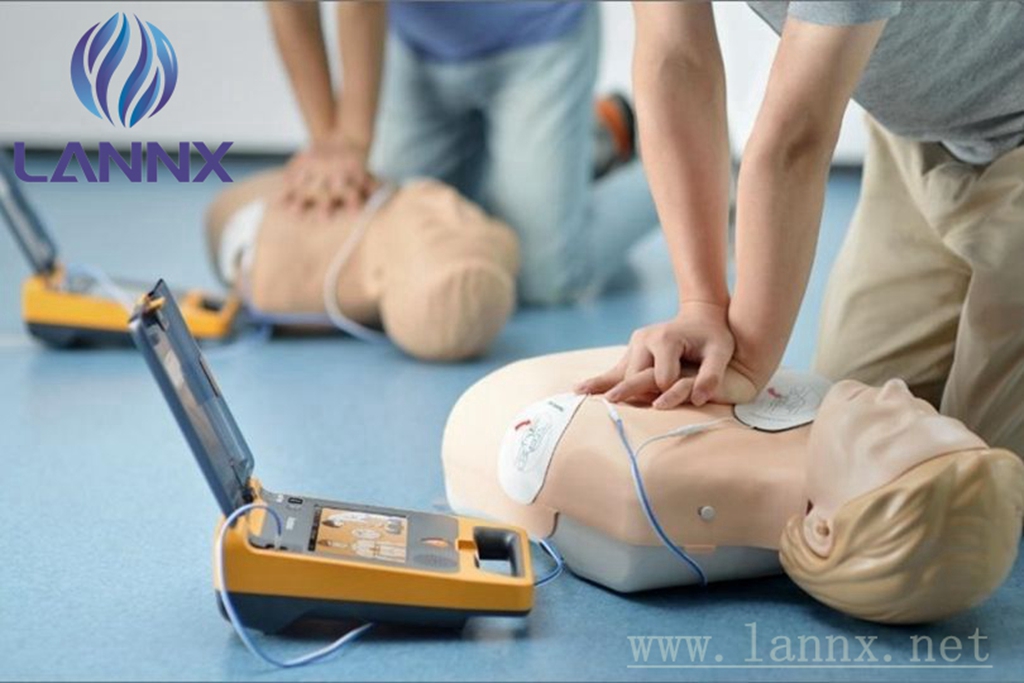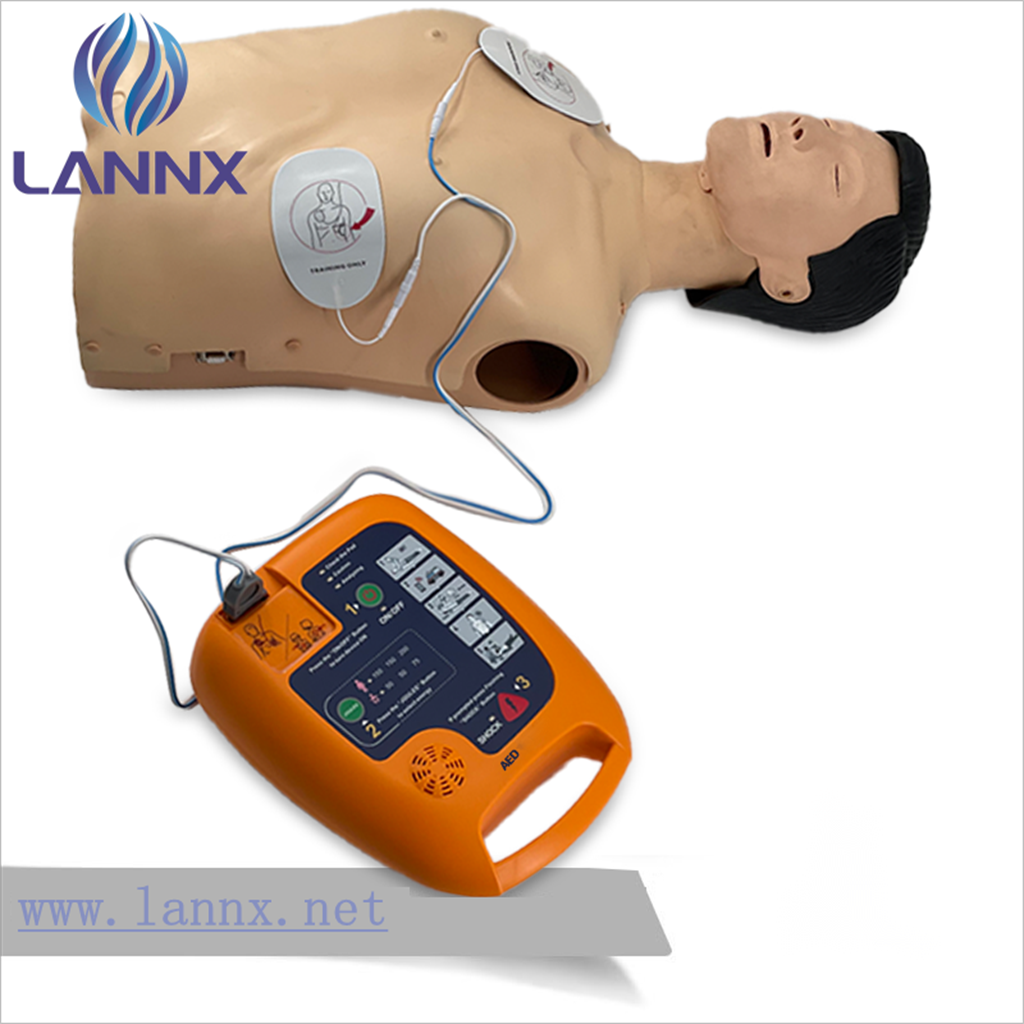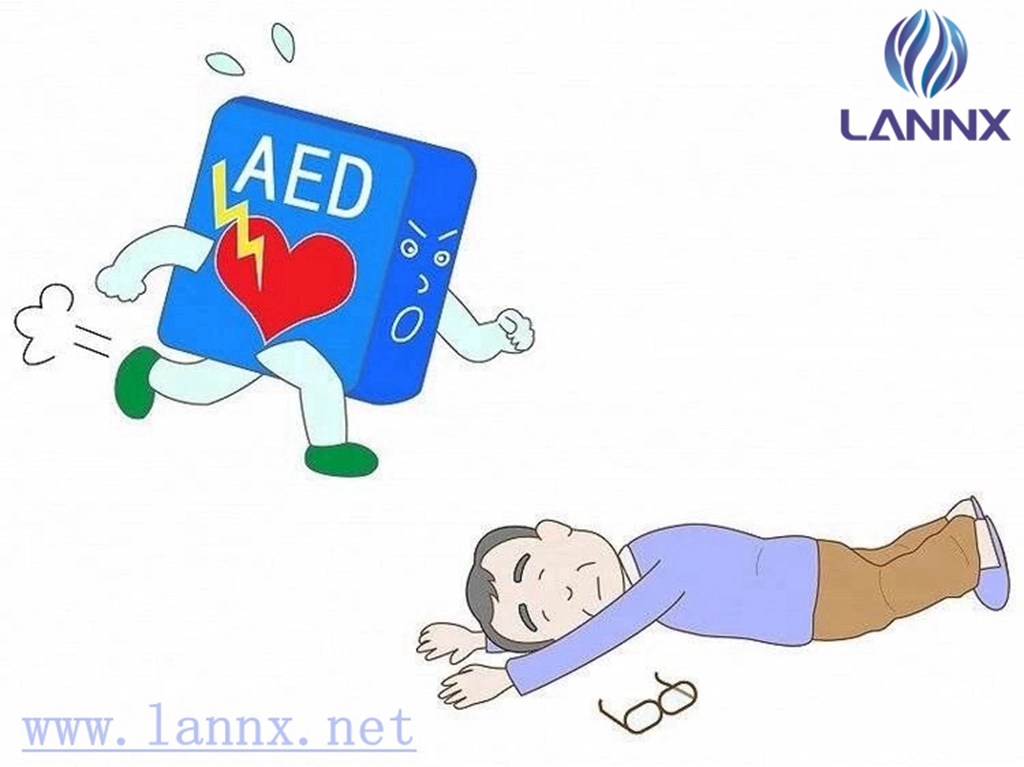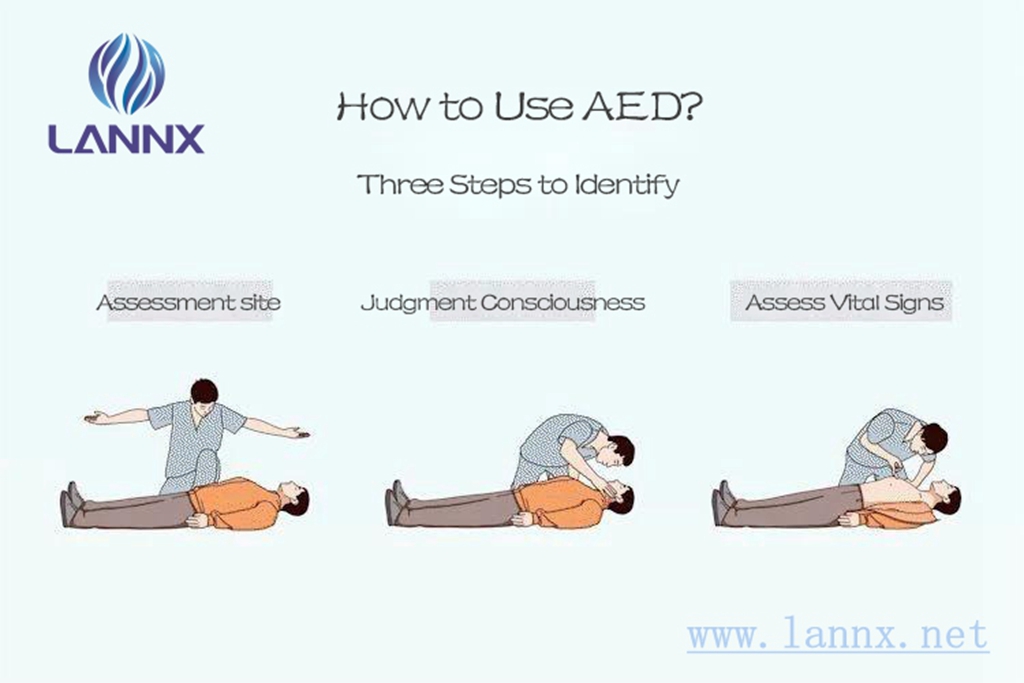AED stands for Automated External Defibrillator. It is an automated external defibrillator. It is a portable emergency device used to rescue cardiac arrest patients. It can be used for cardiac arrest caused by ventricular fibrillation, pulseless ventricular tachycardia, etc. If a patient suffers cardiac arrest, we can defibrillate the heart through AED shock, which will automatically discharge electricity to specific areas of the human body to restore the heart to a normal heartbeat rhythm.
Is the AED easy to operate?
AED is intuitive to operate and simple to use, and can also be used by non-medical professionals. We can use it according to the voice prompts or operating instructions of the instrument, and the machine will automatically determine whether the patient needs electric shock treatment.
AEDs are widely used in various public places, such as schools, shopping malls, train stations, airports, subway stations, etc. Due to the convenience and ease of use of AED, it can provide emergency rescue for sudden cardiac arrest, buy precious time for patients and improve survival rate.
When to use an AED?
How to know when to use an AED? When we find a patient lying on the ground without contact and determine that the patient is unresponsive and not breathing, we should immediately obtain and use an AED. As for whether the patient needs defibrillation, please leave it to the AED to make its own judgment and follow the AED's instructions to complete the operation.
Step 1: Assessment site
When the patient suddenly falls to the ground, immediately let the patient lie flat on the ground or a hard board, and confirm that the scene and surrounding environment are safe to avoid secondary injuries;
Step 2·Judge consciousness
Tap the patient's shoulders and shout (for example, sir, sir, what's wrong with you) to determine whether the patient is conscious;
Step 3· Assess vital signs
Check whether the patient's chest rises and falls, and feel the carotid artery to see if there is a pulse. The above operations need to be completed within 10 seconds.
How to use an AED?
After you get an AED, do you know how to correctly use an AED? Let’s show you step by step how to use AED.
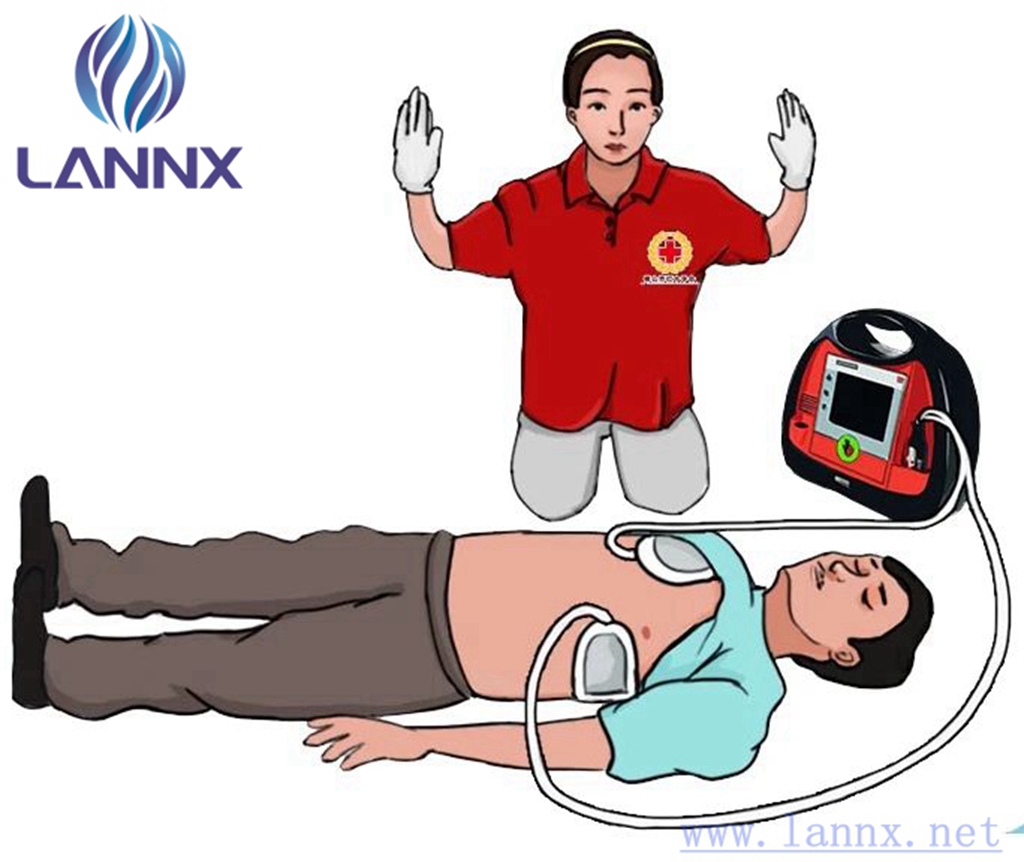
01. Power on
After obtaining the AED, place the AED next to the patient, open the cover of the AED, insert the electrode plate plug into the AED host jack, and turn on the power; it is necessary to continue to perform cardiopulmonary resuscitation while preparing the AED.
02. Place electrode pads
Untie the patient's clothes, make sure the patient's chest is dry and unobstructed, and attach the electrode pads so that the electrode pads fully contact the skin. Place the two electrode pads on the outside of the patient's left nipple and on the top of the right chest respectively.
**Note: Dry chest
If the patient is drowning, the chest should be dried before applying electrode pads;
**Note: No covering of chest skin
If the patient has a lot of hair on his chest, he needs to use the razor carried in the defibrillator to shave the hair (this operation can be ignored in an emergency). Female patients should take off their underwear before using the defibrillator.
03. Defibrillation
Follow the voice prompts to operate the AED and wait for the AED to analyze the heart rhythm. Avoid contact with the patient when analyzing the heart rhythm, which may lead to inaccurate analysis. After the analysis is completed, the AED will issue a recommendation on whether to perform defibrillation. After reminding and confirming that no one has come into contact with the patient, press " Press the "Discharge" button to perform defibrillation;
04. CPR
After defibrillation is completed, if the patient has not recovered breathing and heartbeat, cardiopulmonary resuscitation should be continued for 2 minutes and the AED should be used for defibrillation again. Repeat CPR + AED until medical personnel arrive.
(For specific AED usage instructions, please follow the prompts according to the AED model)
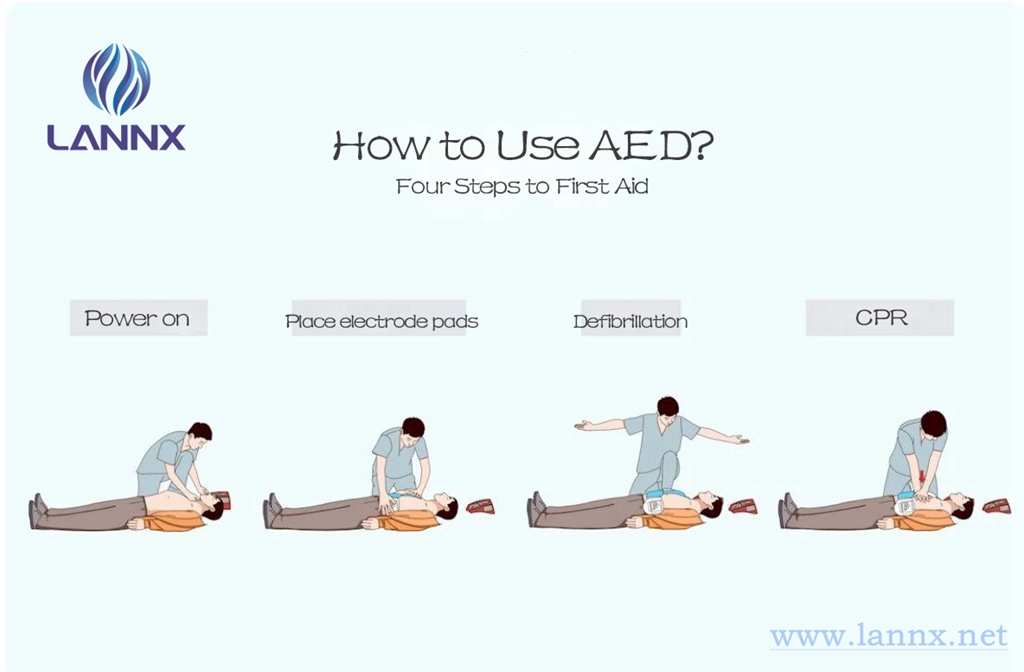
Special Notes for AED
1. Patients over 8 years old should use adult electrode pads; children under 8 years old should give priority to pediatric electrode pads. If there are no pediatric electrode pads, the "pediatric mode" on the defibrillator should be selected;
2. If the patient is equipped with a pacemaker, the electrode pad should be at least 2.5cm away from the pacemaker.
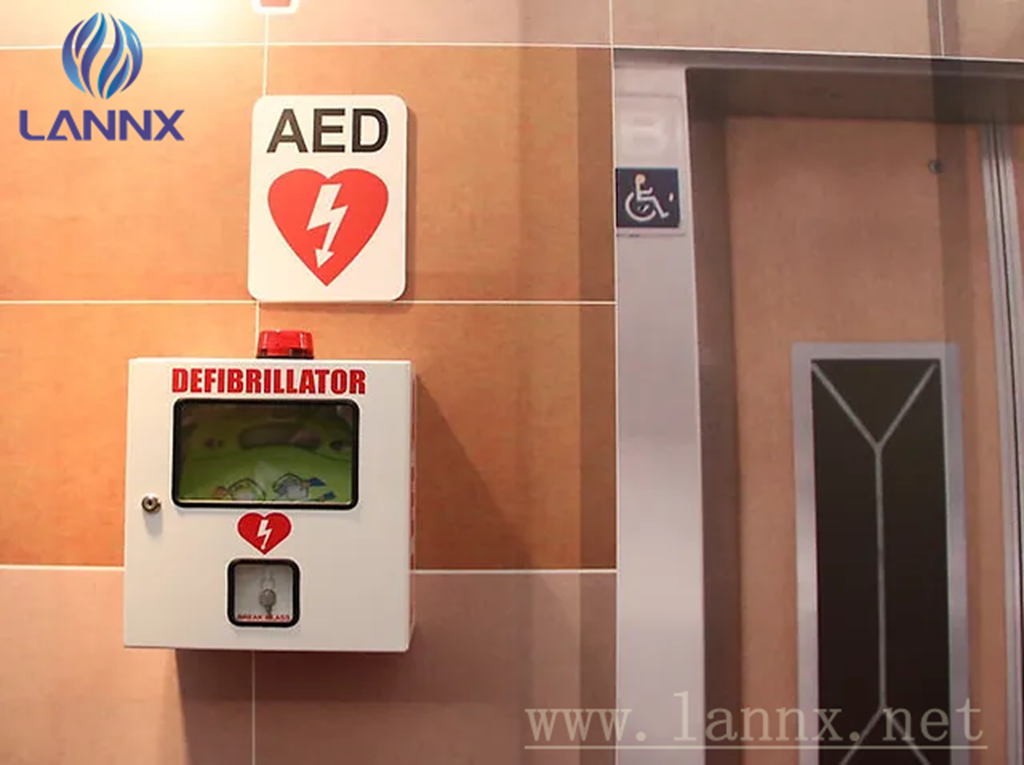
Post time: Nov-01-2023


